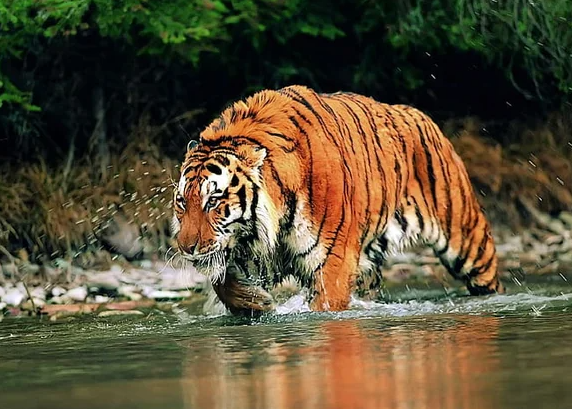The Largest Bengal Tiger: A Majestic Predator
Bengal tigers are one of the most awe-inspiring creatures on Earth. Known for their remarkable strength, beauty, and unique stripes, these big cats play a crucial role in the ecosystems they inhabit. Understanding the largest Bengal tiger not only highlights the physical attributes of this magnificent animal but also emphasizes the importance of wildlife conservation.
Physical Characteristics of the Largest Bengal Tiger
The largest recorded Bengal tiger weighed an astounding 569 pounds and measured approximately 10 feet in length from nose to tail. These tigers typically exhibit a distinctive orange coat adorned with dark stripes, which not only provides camouflage in their natural habitat but also symbolizes their uniqueness. Males generally tend to be larger than females, with powerful muscular bodies designed for hunting and enduring the fiercely competitive life of the jungle. Their sharp retractable claws and formidable teeth make them skilled hunters, capable of bringing down large prey such as deer and wild boar.
Habitat and Range of Bengal Tigers
Bengal tigers primarily reside in the dense forests and grasslands of India, Bangladesh, Nepal, and Bhutan. Their habitats range from tropical rainforests to dry deciduous forests, showcasing their adaptability to various environments. These tigers are most commonly found in national parks and wildlife reserves, where they can roam freely and hunt without interference from humans. Unfortunately, habitat loss due to deforestation, poaching, and human encroachment poses significant threats to their survival, making conservation efforts critical. Protecting their natural habitat is essential for ensuring that these magnificent creatures thrive in the wild.
Conservation Status and Efforts
The Bengal tiger is classified as endangered, with only an estimated 2,500 individuals remaining in the wild. Conservation organizations and governments are working tirelessly to protect these majestic animals and their habitats. Initiatives include anti-poaching measures, habitat restoration, and public education campaigns to raise awareness about the threats facing tigers. Community involvement is crucial, as local populations can help monitor and protect these animals. Through combined efforts, we can hope to see an increase in their population and ensure a future where the largest Bengal tiger continues to roam the wild.
In conclusion, the largest Bengal tiger is not just a symbol of strength and beauty; it represents the urgent need for wildlife conservation. By learning more about these incredible animals and supporting conservation efforts, we can contribute to their survival. Let’s take a step forward in protecting our planet’s majestic wildlife!

